[ad_1]
Gone are the days when creating a digital product, like a website, newsletter, or application, was available only to those with specific skills or a decent amount of money to hire a professional development team. In 2022, lack of knowledge of programming languages and tight finances are no longer an obstacle: everyone can do this thanks to no-code solutions.
No-code solutions have been with us for a while, carving a certain niche for themselves. Siter, Slides, Shopify, and Mailchimp are some of the most common names. Although they are not as perfect and powerful as we want them to be, they have already become viable and reliable solutions that help get businesses off the ground and successfully run them.
Let us dive a little deeper into the no-code movement and its essentials, list its benefits and risks, and consider the seven best tools in this sector designed to give startups a solid foundation to kick off their ventures and move toward their prime marketing and branding goals.
First things first – what is no-code?
What Is No-Code?
No-code or, to be more precise, no-code development approach is a solution that does not require any programming and technical skills to do a range of tasks traditionally done by development departments and companies. These tasks come in all shapes and sizes, from adding small units to the website like push-ups or contact forms to constructing fully-fledged landing pages to introducing machine learning modules in marketing campaigns.
No-code solutions take a visual approach to software development and workflow. They use maximum abstractions to decouple programming languages and syntax from logic to create an intuitive environment for citizen developers.
Online Email Template Builder
With Postcards you can create and edit email templates online without any coding skills! Includes more than 100 components to help you create custom emails templates faster than ever before.
They have a two-part structure:
- In the foreground, it is an intuitive, handy, and friendly interface with a simple drag-and-drop playground, components presented as visual blocks with a customization panel and multiple settings, and extra features.
- In the background, lots of stuff is going on. It is a bulk of code and algorithms supported by rigid structure and logic and a collection of reusable, scalable, and flexible snippets regularly updated to meet current web standards.
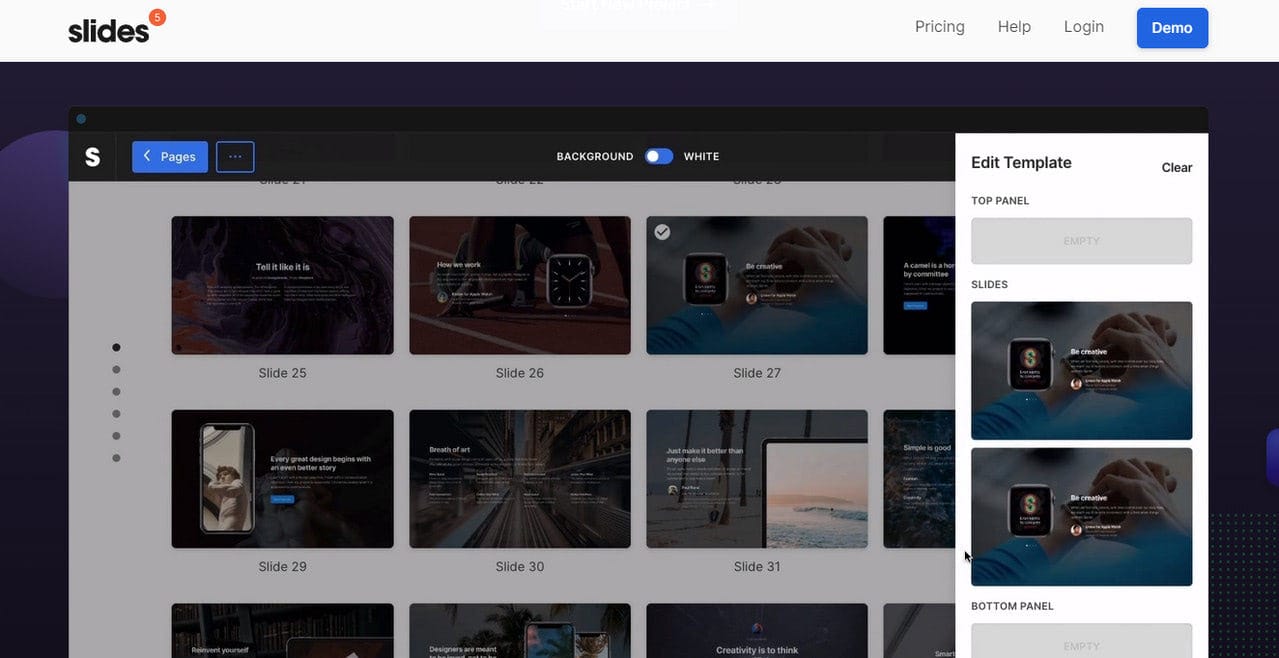
Slides – Popular Website Builder
Essential Qualities of No-Code Solutions
The web is teeming with solutions that claim to be code-free. However, the harsh truth is that most of them are low-code development tools that require basic knowledge of programming languages or at least tech-savvy skills. Low-code platforms differ from no-code solutions in these ways:
- They are aimed at developers rather than business owners.
- They provide tools to speed up technical development.
- They offer a handy way of manually editing code.
- They have the potential to create a vast array of software solutions.
- They are applicable to more use cases because of the system’s openness.
- They require additional tests to ensure the solution works with the upgraded software version.
Therefore, as a rule, dev teams use them. This makes them a bit tricky for digital entrepreneurs and business owners who do not have a technical background and do not intend to acquire one.
So, how do you define the zero-code approaches? They have certain qualities that let businesses without an in-home dev team and proper tech skills easily build their web applications and tools to automate workflow and streamline various processes. Let us consider them closely.
Basic Qualities of No-Code Solutions
To get into the no-code category, a solution must meet specific criteria. Here are the most critical:
- It should hide the complexity of what users accomplish through simple maneuvers.
- It should use data abstraction and encapsulation to stand aside from all technical details.
- It should employ visual models that allow users to manage data efficiently.
- It should have a minimum possibility of interrogating with the generated code.
- It should have a closed system with a single version at any time to avoid backward compatibility issues.
On top of that, it should have these features:
- Straightforward and intuitive interface.
- Drag-and-drop playground.
- Reordering and rescaling functionality.
- Data management and processing capabilities through a preconfigured database, server-side software, or simple integration with the database of the user’s choice.
- A vast collection of preconfigured, well-styled, and properly-structured elements. Some solutions may offer ready-to-use templates and themes.
- User interface builder.
- Customization panel with in-depth settings.
- Mobile capabilities.
- Accessibility components.
- Variety of publishing options.
Depending on the niche, some of these platforms may also have:
- Various integrations with other applications, including popular social media platforms, distribution channels, standard payment systems, APIs, etc.
- Team collaboration and management.
- Workflow modeling.
- Inbuilt AI and ML models.
- Presentation tools such as slides, graphs, and charts.
- Analytics tools.
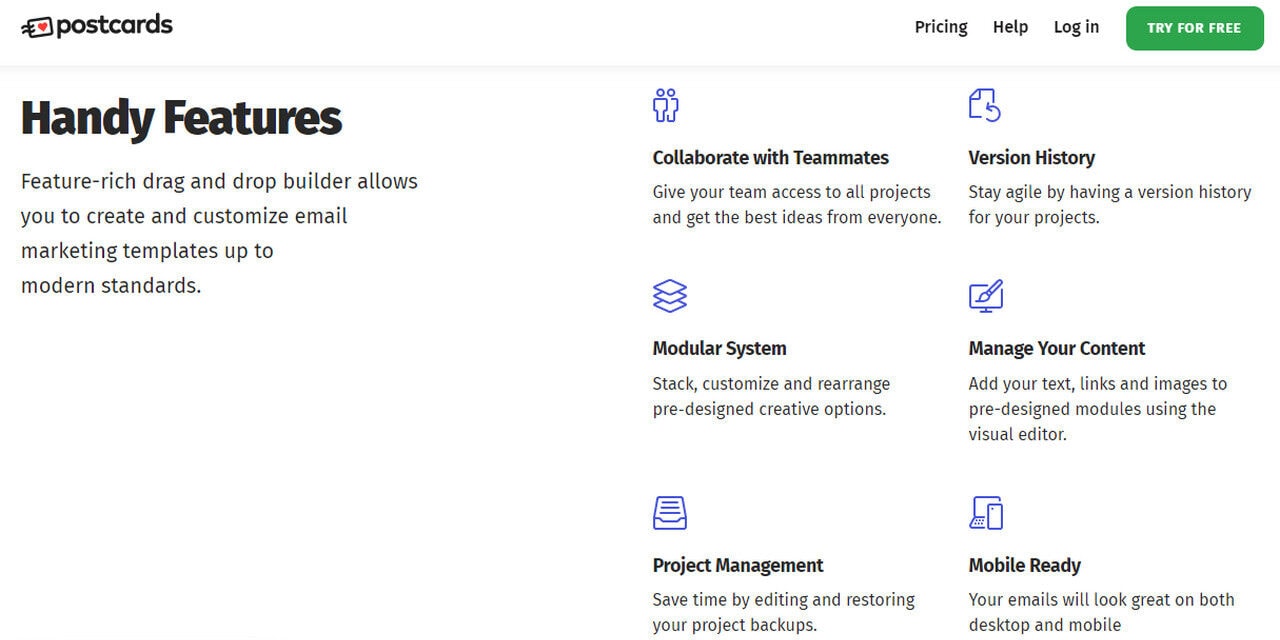
Postcards and Its Essential Features
Possibilities of No-Code Solutions
No-code software is not magic, nor is it a one-size-fits-all solution. It has flaws and risks. However, even with that, it can surprise you with its potential. Consider tasks that this approach is already able to accomplish:
- Build websites and landing pages.
- Create web and mobile applications.
- Craft digital newsletters.
- Streamline workflows.
- Improve business approaches in such areas as:
- CRM
- HRMS
- Presentations
- Project management
- Asset management and some others
Benefits of Using Zero-Code Tools
The best part of a zero-code solution is that whatever knowledge you have, whatever target market you serve, and whatever finances you handle, you may easily take advantage of it. And with all that, it has a vast and promising potential that delivers a range of advantages that are not limited to a particular niche or industry. Let us consider its prime benefits:
- It saves time. This is one of the most significant advantages because time means money. Addressing even a small task to the dev team may take considerable time because the production process involves numerous stages, from planning and approval to QA testing and deployment. However, with ready-to-use solutions that let you get to business immediately, you may skip multiple steps and achieve the desired result quickly.
- It enables rapid delivery of some serious projects.
- It amplifies overall marketing efforts. The faster you can implement strategies or test marketing campaigns, the quicker you define options that resonate with the audience best.
- It reduces costs. Not only do you save money on implementing the project, but you also stay away from extra expenses caused by recruiting, onboarding, and maintaining your dev team.
- It helps businesses stay relevant to market needs, preferences and expectations because most no-code solutions are regularly updated to meet the ever-changing demands and requirements of the market.
- It enhances user experience. The majority of solutions follow the latest specifications and guidelines. This means these tools generate products that are up to high standards.
- It improves collaboration between departments. Thanks to transparency and a handy environment, no-code platforms bridge communication gaps and allow all stakeholders to participate in the development process, making their contribution and bringing about great results.
- It encourages business owners to let their imagination run wild and develop sophisticated or one-of-a-kind products and applications in their corresponding niches.
- It introduces innovation in the company’s development, strategies and campaigns.
- It can be used not only for everyday tasks like building landing pages or newsletters. Some sophisticated solutions allow business owners to do grandiose projects, streamline workflow, management, and organizational processes, benefit from machine learning models, etc.
From saving time to reducing production costs to building AI-powered marketing campaigns, the benefits of using no-code solutions significantly boost the company at the early stage of its life and open real opportunities to maximize revenue, escalate growth and improve development when the company hits its stride.
Risks and Flaws of No-Code Solutions
Whatever powerful zero-code platforms may look to you, the sad truth is, they are not perfect. Before jumping into this mainstream, it is crucial to understand their flaws and risks.
- They lack total control.
- They create vulnerabilities and may make the system insecure.
- They may lead to rampant shadow IT and leakage of sensitive organizational, customer, or regulated data.
- They are not designed to accomplish unique niche-specific tasks.
- They lack storage capabilities and integration possibilities.
- They have limited tools, so scaling the project can be almost impossible.
- They have a limited amount of styles that generate typically looking solutions.
- They have worse integration with legacy applications.
- They can be challenging to test and extend.
A company may also become dependent on the software. This leads to drastic financial consequences in the case of switching vendors.
To mitigate or minimize these risks and flaws, follow these tips:
- Choose only trusted vendors.
- Go for platforms with an excellent support team.
- Ensure software meets current standards.
- Ensure software has attested certifications.
- Maintain complete access control.
- Implement secure data practices.
Best Tools to Get Your Business Started
Siter
Siter is way more than a regular design tool. Made with creative folks in mind, it allows complete freedom to craft all sorts of responsive and mobile-friendly websites on the cloud. Users may even import their designs from Figma to build on them.
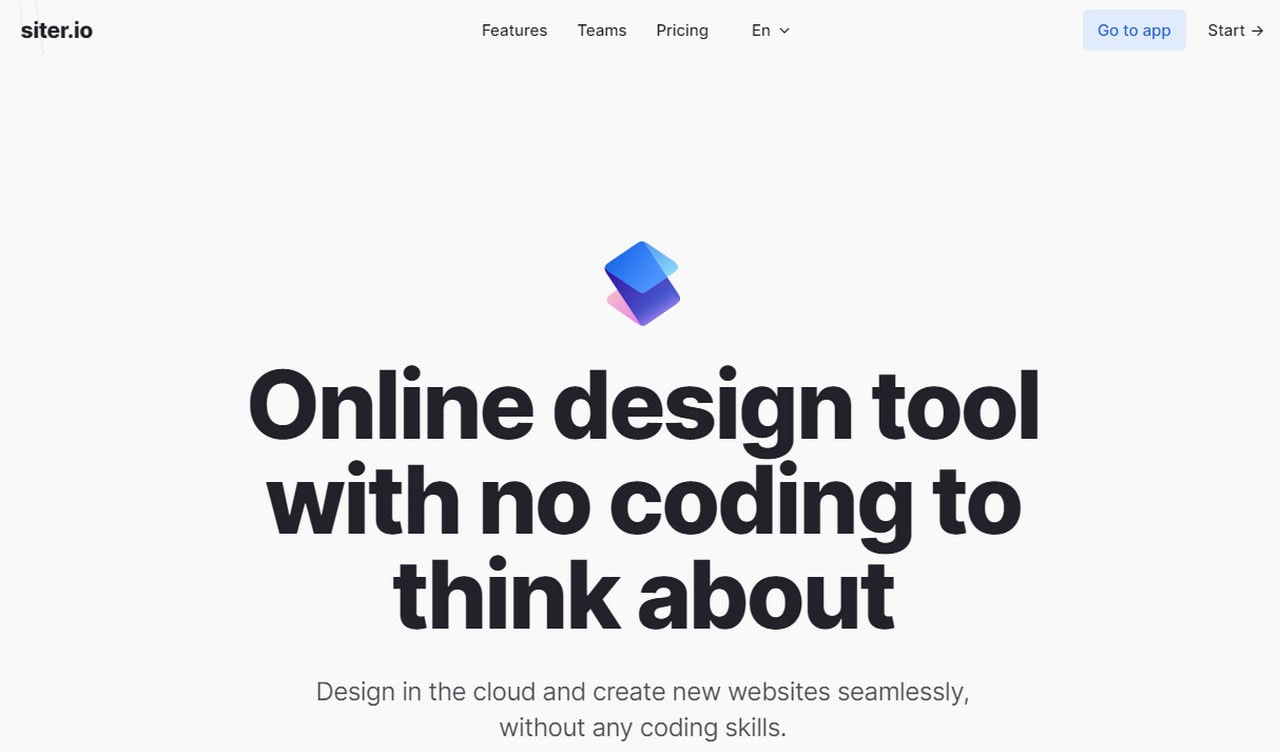
The great thing is that Siter looks and behaves pretty much like any traditional graphics editor. It offers users a handy and intuitive environment with a drag-and-drop playground, familiar tools, shortcuts, and a long list of customization options that allow tuning up even the tiniest details of the user interface.
That is not all. Along with providing a possibility to create reusable elements like color palettes and font styles that can be expanded across projects, the tool also offers a thousand free icons, native integration with Unsplash to use images from the most extensive database on the web, and of course native component for embedding videos from various sources including YouTube.
To make the most out of this feature-rich environment, the team has developed layers that can be organized in logic groups. Users may lock them, hide and move around.
A significant aspect of Siter is its reliable and hassle-free hosting. You may even use your domain for a website to publish it straight away.
Postcards
Postcards is an intuitive email builder for teams and individuals that amps up email marketing ideas. It is a must-have for all digital businesses that collect subscribers and regularly conduct email marketing campaigns.
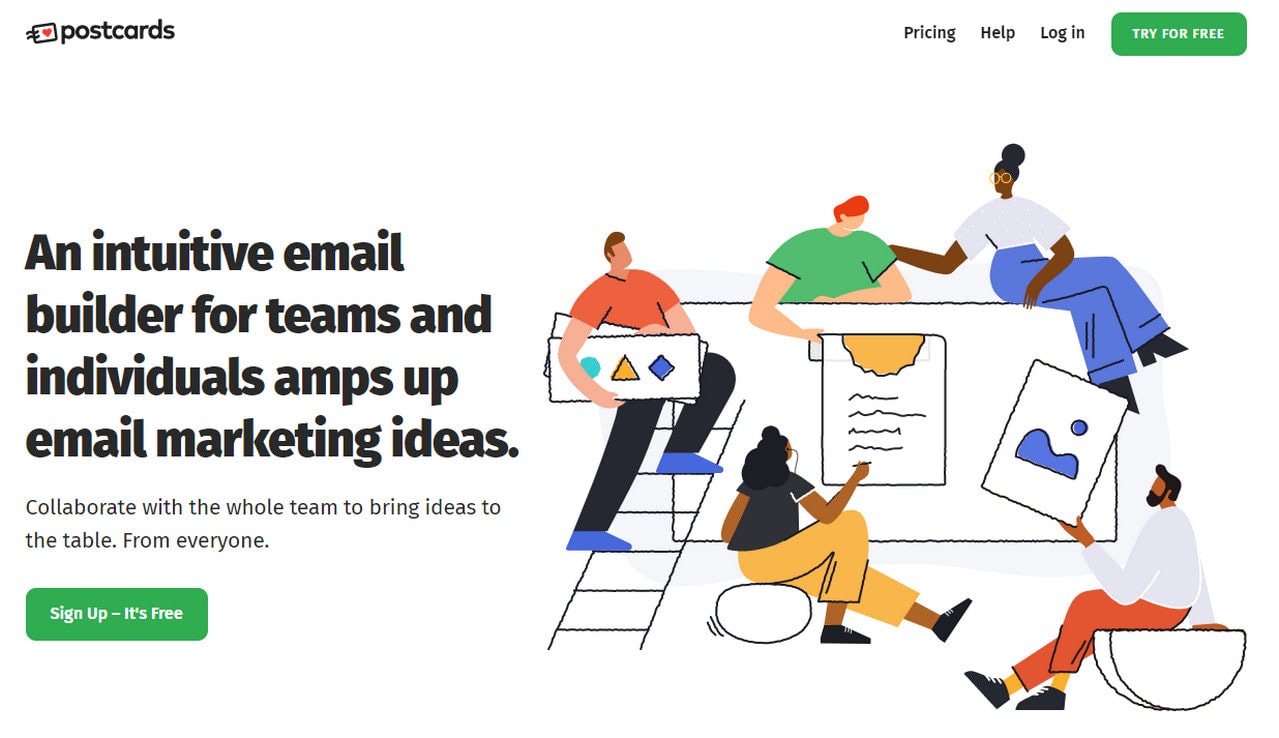
The platform offers users a professional yet handy playground with a collection of stylish, modern, and hand-crafted modules, units, and components, a customization panel where each detail can be tailored to the brand’s needs and style guides, Google Fonts, integration instruments to add text, images, and links, and crucial accessibility units.
Among its main features are:
- Team collaboration
- Modular system
- Version history
- Project management
- External image usage
- Export to ESPs such as Mailchimp or Hubspot
Created by a professional team who knows a thing or two about creating a no-code solution in the website builders niche, it has a vast potential that citizen developers can easily unlock.
Bubble
If you seek a reliable tool to build responsive web applications consistent across mobile devices, then try Bubble.
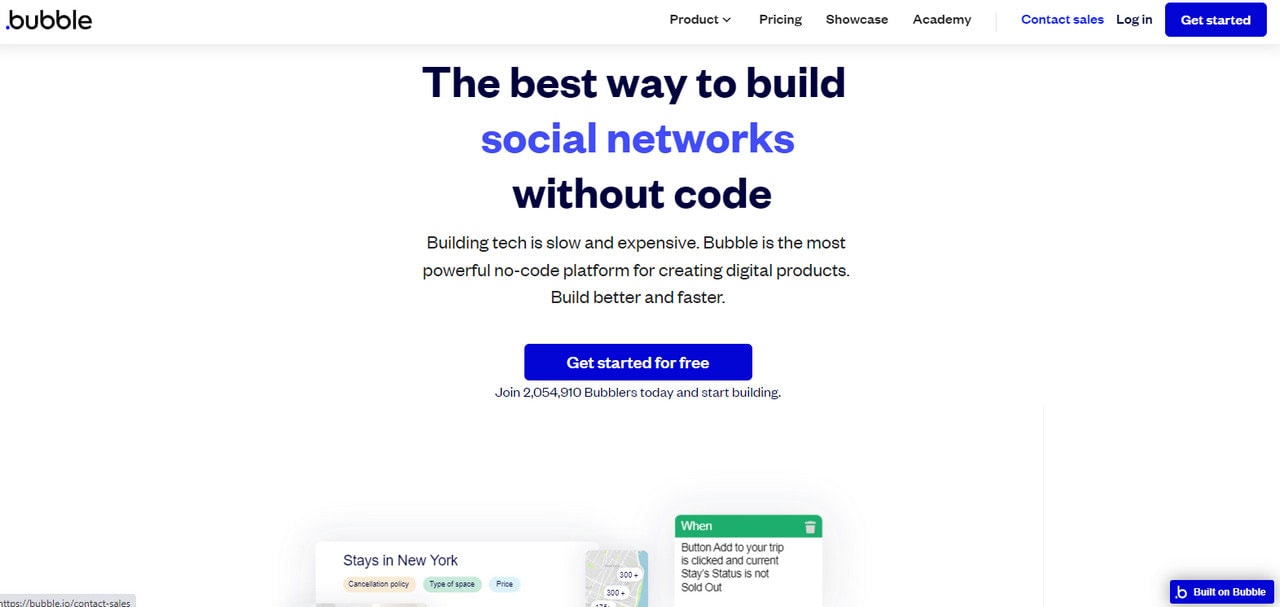
Bubble is an excellent tool for presenting and, most importantly, hosting digital products. It provides a straightforward deployment process and reliable server to give a boost to any startup. When choosing the standard plan, you may enjoy no limit on data storage, traffic volume, and the number of users.
The solution has a fully scalable infrastructure with numerous vital features like
- Drag-and-drop user interface
- Mobile-friendly, fully customizable units, and modules
- Tools to fetch and demonstrate user-generated content or data fetched from Stripe and services alike
- Multilingual support
- Prototype demonstration support
- Version control and backups
- Security basics: Automatic SSL certificates, multi-factor authentication, and highly guarded infrastructure
On top of that, Bubble is serious about helping businesses grow in the digital market; therefore, it has the tools to develop and engage a customer base through emails and SEO.
Caspio
Although Caspio falls into the low-code category, most of its features are made with no-code movement in mind. Therefore, as a person without tech knowledge and skills, you can take advantage of it. And when you are ready to move on, you may unlock the potential hidden behind low-code possibilities.
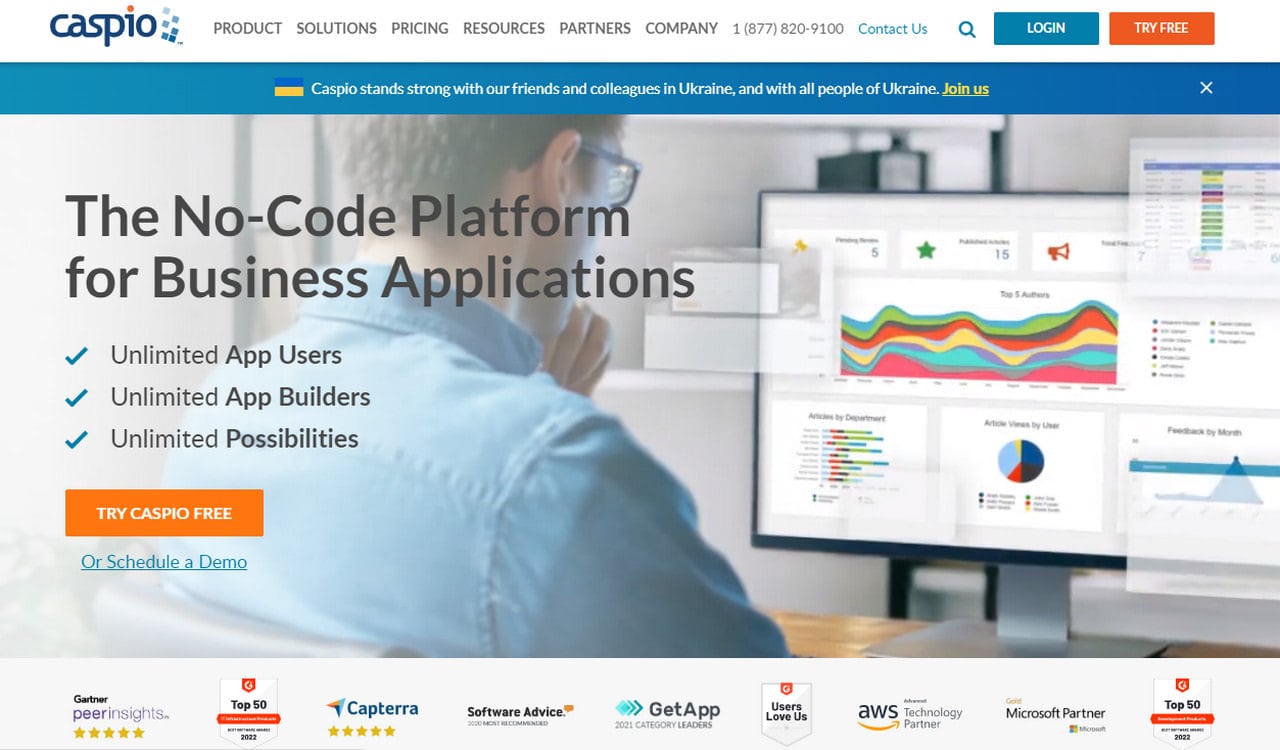
Caspio is a no-code platform for multiple business applications. It is a visual builder that helps customers create cloud applications using custom web forms, searchable databases, multi-user portals, interactive dashboards, and automated workflows. Running on a reliable and time-proven Amazon Web Server, it is a perfect tool for superior scalability and industry-leading cloud-based ideas.
The best part is that the team is obsessed with security. Therefore, the platform has authentication, data encryption, SSO integration, and other features that protect projects from the danger waiting in digital expanses.
Appypie
As the nameplate of this no-code platform suggests, Appypie is all about applications. Unlike Siter and Bubble, it works in the mobile niche. It offers customers reliable ways to bring their ideas to life ten times faster than usual.
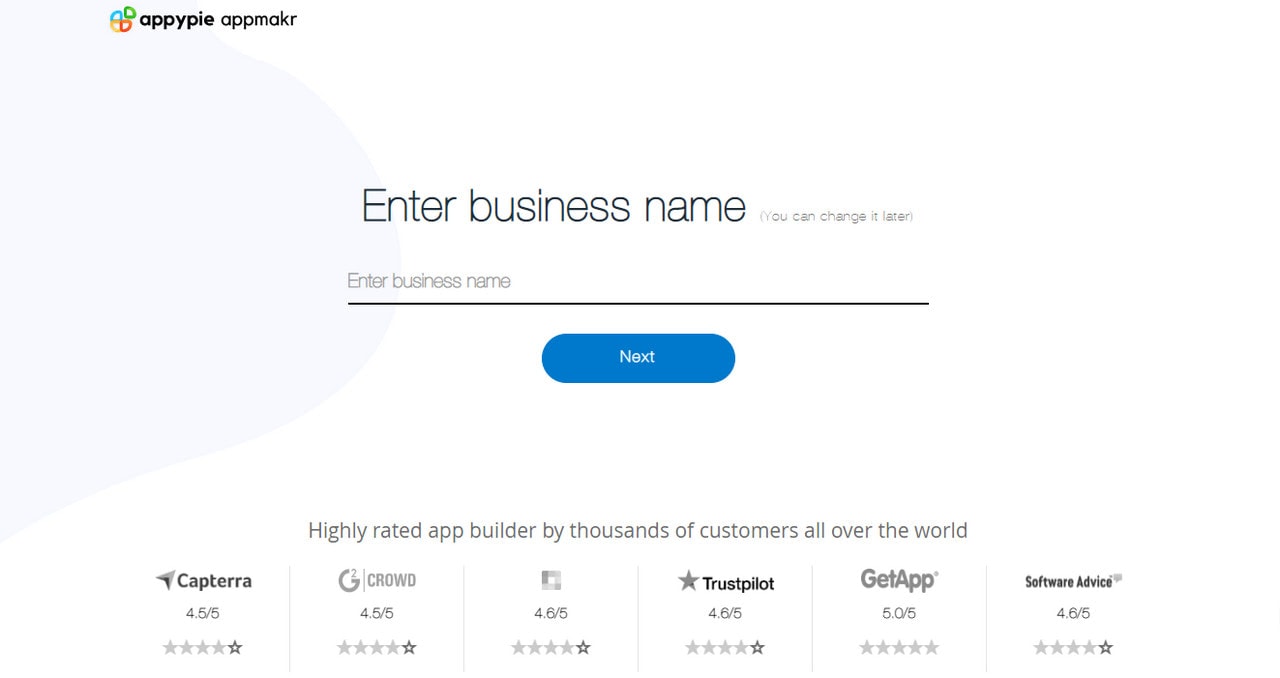
As befits, Appypie has an intuitive drag-and-drop playground that can be handled by all customers irrespective of their coding knowledge, technical skills, and budget. On top of that, it has intelligent workflow automation, numerous basic features, and integration with more than 300 third-party plugins and applications that may amplify the development process, increase productivity, and improve the digital product.
If you have concerns or issues, the friendly support team is willing to address them within a short time.
Quickbase
Quickbase stands in stark contrast to all featured-above tools. It is still a no-code platform that is increasingly friendly and open for business owners from all niches. However, what makes it so special is that it is software for taking a brand’s development process to the next level by improving ways of doing things in business.
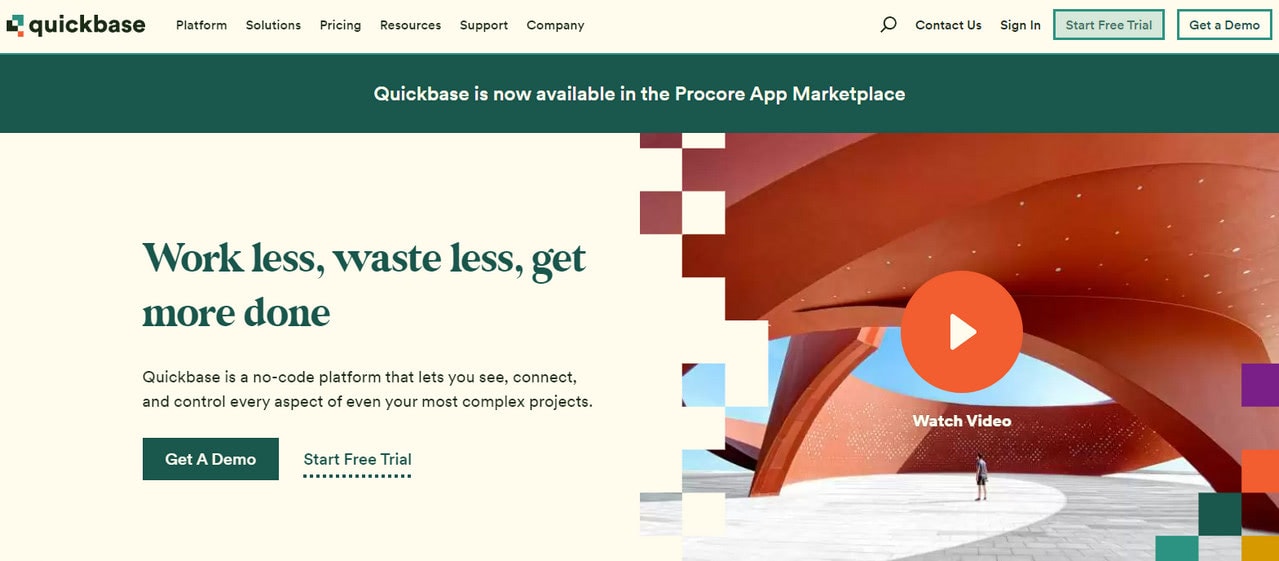
The platform safely connects people, data, and ideas and provides a comfortable environment where all parties exist and collaborate, avoiding the hustle and bustle of the messy digital world.
Among its crucial features are:
- Easy management of complex projects
- Quick deployment
- Data migration
- Top security
- Workflow automation
- Integration with third-party applications
- Audit logs and report caching
- Library of practical applications
- Tools to accumulate and display real-time, actionable insights into operations and processes
Quickbase is a highly advanced platform that assists companies in managing complex and unique data-rich projects using abstractions. This makes it an expensive tool, starting at $600 per month.
Obviously AI
Artificial intelligence is the talk of the town. If you are one of those digital entrepreneurs who recognize a potential hidden in this technology, then you can start unlocking it right now with Obviously AI.
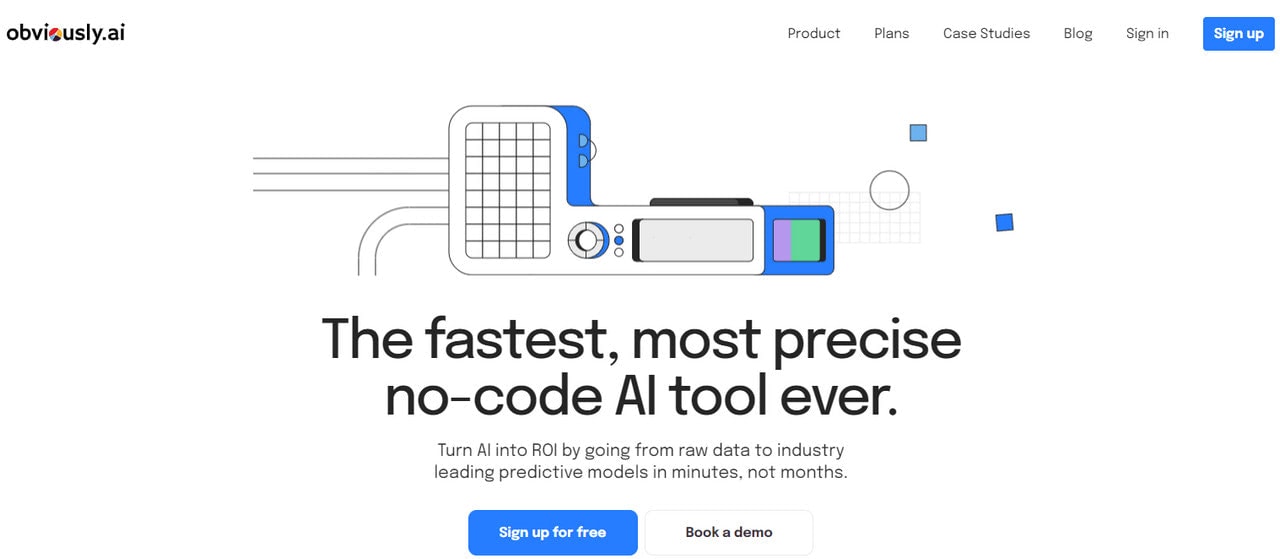
It does not matter whether you have tech skills or not. This unique zero-code AI platform gives you a simple and intuitive interface to integrate machine learning into your business development to boost your company’s growth with the help of data-driven solutions.
For instance, Obviously AI is famous for doing such tasks as:
- Analyzing and predicting churn, lead conversion, loan repayment, fraud, etc.
- Analyzing and predicting sales, dynamic pricing, deal size costs, etc.
- Analyzing and predicting time series
You may develop and manage numerous machine learning models using a simple interface. As a rule, such fields as finances, operations, marketing, sales, and product development greatly benefit from this platform. However, it is pretty flexible and universal, so you may find application in other areas.
Conclusion
No-code solutions sound too good to be true; nevertheless, here they are. The best part is, they will certainly stick around. Recent studies show that the zero-code development platform market will grow and reach a staggering 22 billion this year. Even Google has already brought this technology to its cloud. However, there are some nuances to be taken into account.
Zero-code platforms come with certain flaws that business owners need to address. It is crucial to note that some tasks require good management skills and constant human intervention. Plus, most unique solutions should still be addressed to the professional dev team.
Apart from that, no-code solutions allow business owners to build many end-to-end enterprise applications without spending a fortune on a development agency or acquiring technical skills. They have relatively rich functionality and handle tasks that meet the current demands of the target market. The best part is that they are constantly enhanced and improved, pushing this movement forward daily.
Like what you’re reading? Subscribe to our top stories.
[ad_2]
Source link















